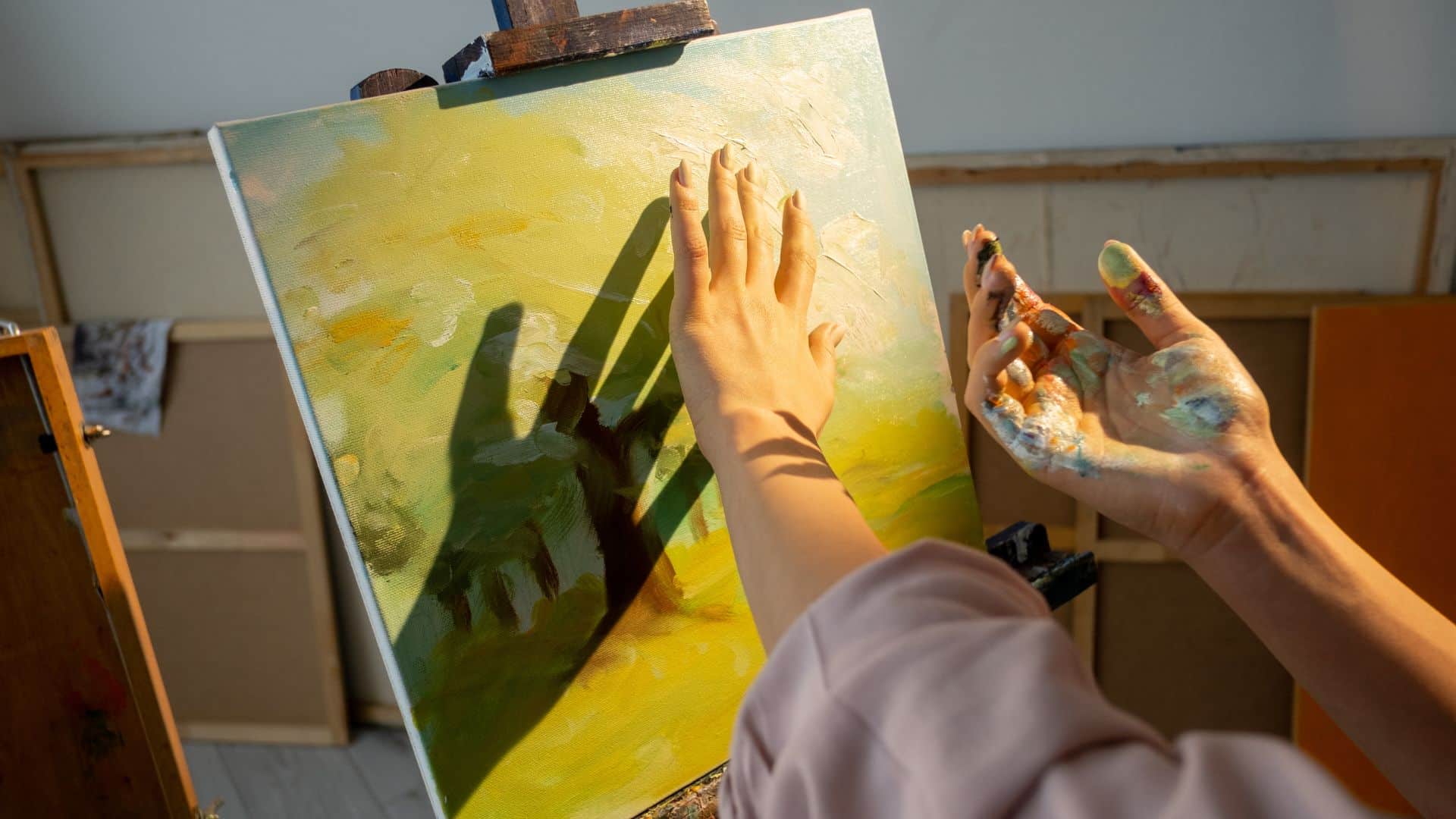Art has a remarkable ability to attract our senses and stir our emotions.
Within the wide world of visual expression, a special group of mediums truly stand out—those that begin with the letter “V.”
This post will uncover 8 incredible visual art forms that exemplify creativity, innovation, and beauty.
If you’re ready to expand your artistic horizons, get excited! We’re about to dive into the mesmerizing world of vexillography, vitreous enamel, video art, and more.
Whether you’re a seasoned art enthusiast or simply curious about new creative frontiers, this content will open your eyes to the beauty of the “V” in visual art.
Art Forms That Start with V
1. Video Art
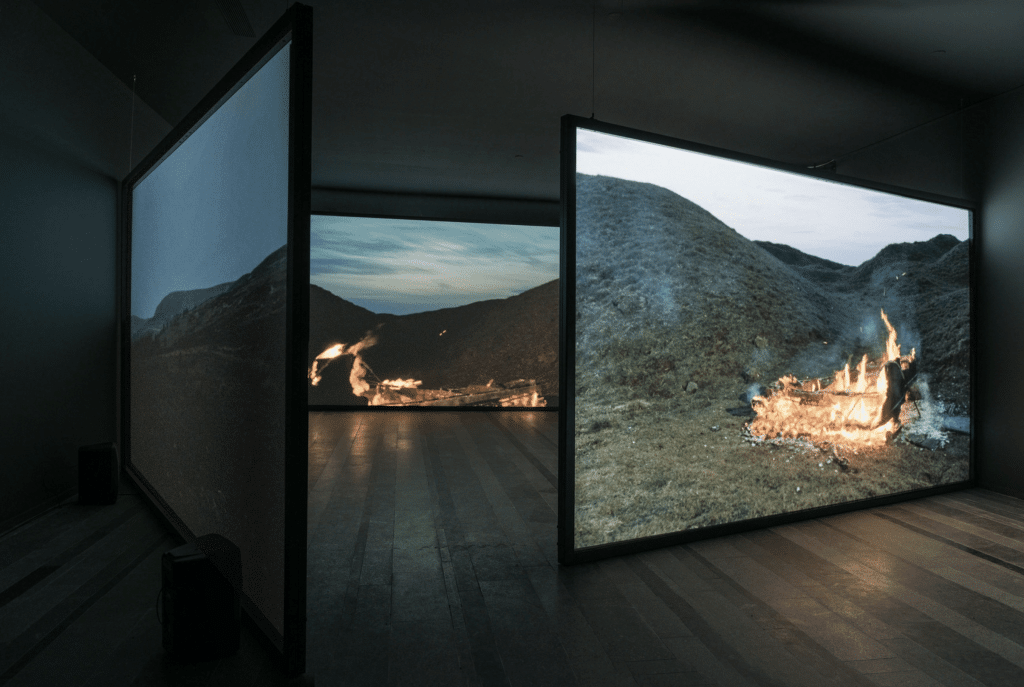
Video art is a form of contemporary art that employs video technology as a visual and audio medium.
Unlike traditional films or videos, video art is typically non-narrative and experimental, focusing on artistic expression rather than storytelling.
- Historical Context: The origins of video art can be traced back to the 1960s when artists began exploring the potential of video technology. The medium gained popularity as artists sought new ways to challenge traditional art forms.
- Evolution: Over the decades, video art has evolved with technological advancements, incorporating digital video, computer graphics, and interactive installations. The rise of digital platforms has further expanded its reach and accessibility.
- Early Influences: The Fluxus movement and performance art heavily influenced early video art, emphasizing spontaneity and breaking down barriers between art and life.
Key Techniques and Mediums
- Digital and Analog Video Technology: Video art utilizes digital and analog video technologies. Artists may employ various techniques, such as editing, layering, and special effects, to create their works.
- Integration of Sound: Sound plays a crucial role in video art, often synchronized with visual elements to enhance the overall experience. Artists experiment with ambient sounds, spoken word, and music to complement their visuals.
- Performance and Installation: Video art frequently intersects with performance art, where the artist’s actions are recorded and presented as part of the piece. Installation art also plays a significant role, with video projections transforming physical spaces.
Cultural and Artistic Impact
- Influence on Modern and Contemporary Art: Video art has profoundly influenced modern and contemporary art, pushing the boundaries of visual expression and integrating new media into the art world.
- Role in Political and Social Commentary: Video art often addresses pressing political and social issues, offering critical perspectives on identity, power, and technology. It serves as a platform for marginalized voices and alternative viewpoint
2. Varnishing

Varnishing is a technique in art that involves applying a protective coating to a finished painting or artwork.
This coating can enhance the vibrancy of colors, provide a uniform finish, and protect the artwork from environmental damage such as dust, moisture, and UV light.
- Historical Development: Varnishing has been practiced since the Renaissance, evolving from simple natural resins to more complex synthetic formulations. Early artists used varnishes to protect their oil paintings and to achieve a desired gloss or matte effect.
- Evolution Over Time: With advancements in chemistry, modern varnishes now include synthetic options that offer improved durability, flexibility, and resistance to yellowing.
Techniques and Materials
- Types of Varnishes: Several types of varnishes are used in art, including oil-based, resin-based, and synthetic varnishes. Each type has distinct properties that influence the final appearance and durability of the artwork.
- Application Methods: Varnishing can be applied using various methods, such as brushing, spraying, or dipping. The choice of method depends on the desired effect and the specific requirements of the artwork.
- Tools Used: Common tools for varnishing include soft brushes for even application, spray guns for larger surfaces, and sponges for textured finishes. Proper tools ensure a smooth and uniform layer of varnish.
Significance in Art Conservation
- Role in Preserving Paintings: Varnishing is crucial in conserving artworks. It protects the surface of paintings from dirt, grime, and mechanical damage, ensuring their longevity and stability over time.
- Enhancing Visual Appeal: Besides protection, varnish can significantly improve the visual appeal of paintings by deepening colors, increasing contrast, and providing a desirable sheen.
3. Vexillography

Vexillography is the art and practice of designing flags.
It involves creating symbolic representations that convey specific meanings, often related to national, regional, or organizational identity.
- Historical Origins: The origins of vexillography date back to ancient civilizations where flags were used as military standards and symbols of authority. Flags have evolved significantly, becoming central symbols for nations and movements.
- Significance: Flags hold immense importance as they encapsulate the values, history, and aspirations of the entities they represent. They serve as powerful tools for identity and unity.
- Development Over Time: The principles of flag design have been refined over centuries, with modern vexillography balancing tradition and contemporary aesthetics.
Design Principles and Elements
- Key Principles of Flag Design: Effective flag design follows simplicity, distinctiveness, and meaningful symbolism. Simple designs ensure recognizability and ease of reproduction.
- Symbolism: Symbols on flags often carry deep meanings, representing historical events, cultural values, or natural features. Every element on a flag should have a clear and purposeful meaning.
- Color Theory: Colors play a crucial role in vexillography, with each color often carrying specific connotations. For instance, red may symbolize bravery, while blue can represent peace or freedom.
Cultural and Political Influence
- Role in Movements and Ideologies: Flags are critical in representing political movements, ideologies, and social causes. They signal allegiance, solidarity, and resistance.
- Historical Examples: Historical flags, such as the Soviet Union’s hammer and sickle or the black flag of the pirate Jolly Roger, symbolize distinct ideologies and cultural phenomena.
- Contemporary Contexts: Modern examples include the Rainbow Flag, which represents LGBTQ+ pride and diversity, and the Black Lives Matter flag, which symbolizes the fight against racial injustice.
4. Virtual Reality Art
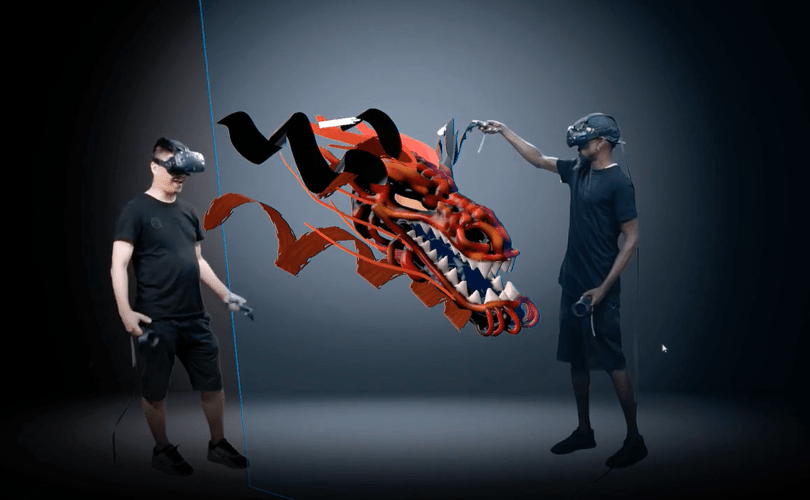
VR art is an immersive art form that utilizes virtual reality technology to create interactive and three-dimensional artistic experiences.
It allows artists to construct new worlds that viewers can explore and interact with using VR headsets and other related technologies.
- Historical Context: VR art emerged in the late 20th century with the advent of early virtual reality systems and has rapidly evolved with technological advancements in the 21st century.
- Integration in Art: VR art integrates traditional artistic principles with cutting-edge technology, offering a new medium for artists to express their creativity. It expands the possibilities of storytelling, visualization, and viewer engagement.
Techniques and Mediums
- VR Software and Hardware: Key tools for creating VR art include VR headsets, motion sensors, and specialized software like Unity, Unreal Engine, and Tilt Brush. These tools allow artists to model, animate, and design immersive environments.
- Creation Processes: The creation process in VR art involves 3D modeling, animation, and coding to create interactive elements. Artists often collaborate with technologists and programmers to realize their visions.
- Interactive Experiences: VR art is characterized by its interactivity. Viewers can navigate through virtual spaces, manipulate objects, and experience the artwork from multiple perspectives, creating a deeply personal and engaging experience.
Future Prospects and Challenges
- Potential Developments: Future developments in VR art may include more advanced interactive capabilities, greater accessibility through affordable VR technology, and deeper integration with artificial intelligence to create adaptive and evolving artworks.
- Technical Considerations: Challenges include the high cost of VR equipment, the steep learning curve associated with VR software, and the need for significant computational power to create high-quality VR experiences.
- Impact on Traditional Art Forms: As VR art grows, it may influence and integrate with traditional art forms, leading to new hybrid practices and expanding the boundaries of what is considered art.
5. Vitreous Enamel Art
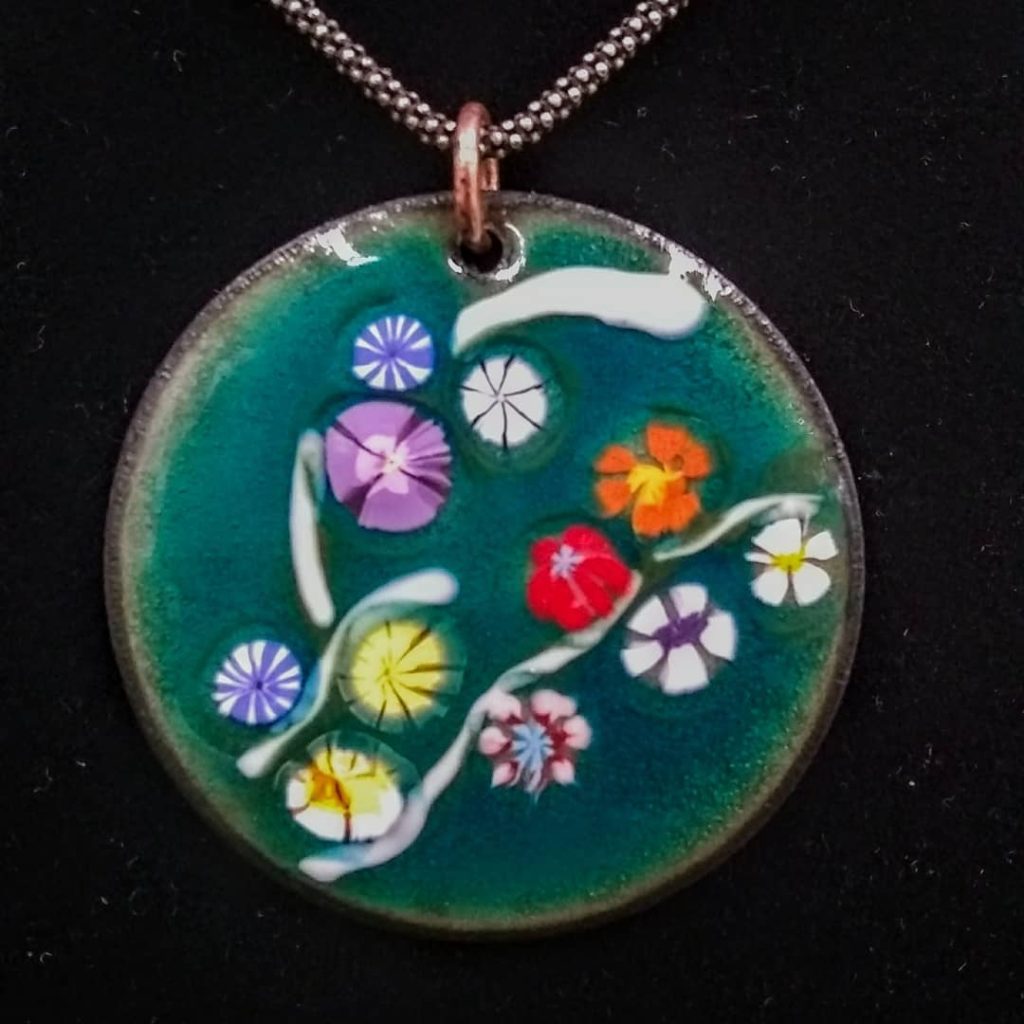
Vitreous enamel art involves fusing powdered glass to a substrate, typically metal, at high temperatures.
The result is a durable, glossy surface that can be used for decorative and functional purposes.
- Historical Background: The use of vitreous enamel dates back to ancient civilizations, including the Egyptians and Greeks. The technique was further refined during the Byzantine and Renaissance, becoming popular for decorating jewelry, religious items, and artworks.
- Traditional Techniques: Traditional enameling techniques involve carefully applying enamel powder to metal surfaces and then firing them in a kiln. The high temperature melts the powder, which then fuses with the metal, creating a smooth and durable coating.
- Evolution Over Time: Over the centuries, various cultures have developed distinct enameling styles and techniques, each contributing to the rich history of vitreous enamel art.
Techniques and Materials
- Enameling Processes: The enameling process includes several steps: cleaning the metal surface, applying the enamel powder, firing the piece in a kiln, and often repeating the process to build up layers of color and detail.
- Types of Enamel: There are several types of vitreous enamel, each with unique characteristics. Cloisonné involves creating compartments with metal wires and filling them with enamel. Champlevé involves carving out areas of the metal and filling them with enamel. Plique-à-jour creates a stained-glass effect by using no backing, allowing light to pass through the enamel.
- Tools Used: Essential tools for enameling include kilns, enamel powders, metal bases (such as copper, gold, or silver), and various hand tools for shaping and detailing the metal.
Artistic and Functional Applications
- Use in Jewelry: Vitreous enamel is widely used to create intricate and colorful jewelry. Its durability and aesthetic appeal make it a popular choice for earrings, pendants, and brooches.
- Decorative Arts: Beyond jewelry, enamel is used in various decorative arts, including watch dials, vases, and plaques. Its ability to hold vibrant colors and intricate details makes it ideal for ornamental purposes.
- Architectural Applications: Enamel panels are used in architectural designs for both interior and exterior decoration. They offer a unique combination of beauty and durability and are suitable for various architectural styles.
6. Visual Poetry
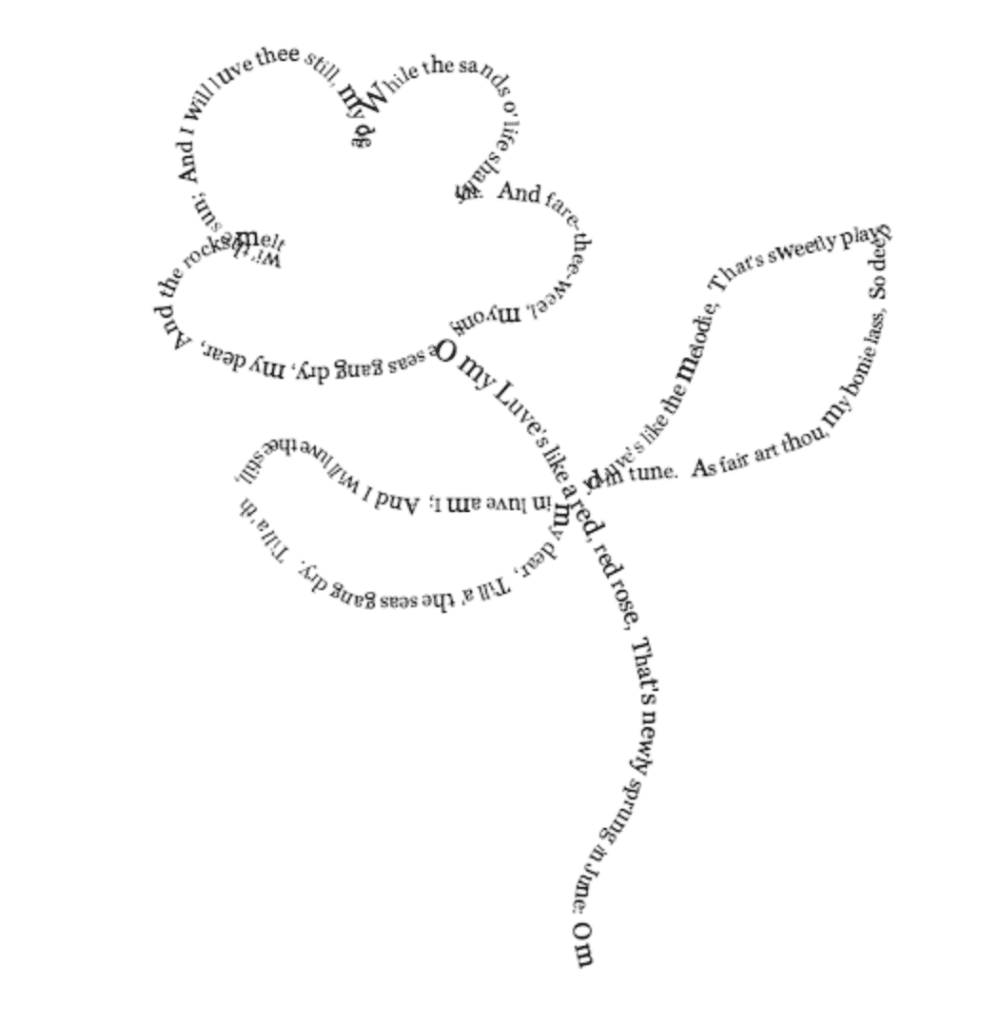
Visual poetry is an art form that combines literary and visual elements to create works where the visual arrangement of text contributes to its meaning.
It blurs the lines between traditional poetry and visual art, offering a multi-sensory experience to the audience.
- Historical Origins: The roots of visual poetry can be traced back to ancient cultures, including Greek and Roman inscriptions, and more prominently to the 20th-century avant-garde movements such as Futurism, Dadaism, and Concrete Poetry.
- Key Characteristics: Visual poetry often features unconventional layouts, typographic experimentation, and images alongside or within the text. Words’ form, color, and arrangement are as significant as their meaning.
- Evolution Over Time: Visual poetry has evolved with technological advancements, from hand-drawn and typewritten compositions to digital and multimedia presentations.
Techniques and Presentation
- Integration of Text and Visual Elements: Visual poets use the layout and typography of text to convey meaning visually. This may include arranging words into shapes, using different fonts and sizes, and incorporating colors and images.
- Various Formats and Mediums: Visual poetry can be presented in numerous formats, such as printed books, posters, digital screens, and interactive installations. It can range from minimalist designs with few words to complex compositions combining extensive text and imagery.
- Digital and Multimedia Approaches: With the advent of digital technology, visual poetry has expanded into multimedia, using animations, sound, and interactive features to enhance the viewer’s experience.
Cultural and Artistic Significance
- Challenging Traditional Literary Forms: Visual poetry challenges traditional poetry’s conventions by emphasizing the text’s visual aspect. It invites readers to engage with poetry not only through reading but also through seeing.
- Contributions to Contemporary Art and Literature: Visual poetry has contributed significantly to contemporary art and literature by expanding the possibilities of textual expression and fostering a deeper integration of different artistic disciplines.
- Role in Education and Literacy: Visual poetry is also used in educational settings to enhance literacy and creative thinking, encouraging students to explore the relationship between text and visual art.
7. Vanitas
Vanitas is a genre of still-life painting that originated in the Netherlands during the early 17th century.
It is characterized by symbolic imagery reflecting life’s transience, the futility of pleasure, and the certainty of death.
- Historical Context: Vanitas paintings emerged during a time of religious and philosophical reflection in Europe, particularly influenced by the Protestant Reformation. They often served as moral reminders of the brevity of human life and the folly of earthly pursuits.
- Symbolism: The genre’s name, “vanitas,” comes from the Latin word for “vanity,” highlighting the vanity and fleeting nature of worldly goods and human endeavors.
- Evolution Over Time: While rooted in the Baroque period, vanitas themes have continued to influence modern and contemporary art, adapting the genre’s core messages to new contexts.
Common Themes and Motifs
- Symbolic Objects: Common objects in vanitas paintings include skulls, which symbolize mortality; hourglasses and clocks, which represent the passage of time; and extinguished candles, which denote the end of life.
- Luxury and Wealth: Vanitas paintings often depict luxurious items such as jewelry, gold coins, and fine fabrics, juxtaposed with symbols of decay to highlight the transient nature of wealth and beauty.
- Books and Instruments: Musical instruments and books are frequently included, symbolizing the fleeting nature of knowledge and pleasures.
Cultural and Philosophical Impact
- Themes of Life and Death: Vanita’s paintings delve deeply into themes of life, death, and the transient nature of existence, prompting viewers to consider their mortality and the value of their actions.
- Moral and Philosophical Discourse: The genre has influenced moral and philosophical discourse, particularly in its emphasis on the futility of materialism and the importance of spiritual and ethical considerations.
- Contemporary Resonance: Modern artists and thinkers continue to draw inspiration from vanitas themes, using them to comment on contemporary issues such as consumerism and the human condition.
8. Vernacular Photography

Vernacular photography refers to images taken by amateur or non-professional photographers that capture everyday life and ordinary subjects.
It includes family snapshots, travel photos, and other informal pictures not intended as art.
- Historical Development: Vernacular photography began in the late 19th century with the advent of portable cameras like the Kodak Brownie, which made photography accessible to the general public. Over the decades, the genre has evolved with advancements in photographic technology and changing social practices.
- Cultural Context: Vernacular photography provides a candid and authentic view of cultural and social history, documenting moments and scenes often overlooked by professional photographers.
- Popularity: The popularity of vernacular photography surged with the rise of digital cameras and smartphones, making it an integral part of daily life and social media culture.
Techniques and Characteristics
- Everyday Subjects and Candid Shots: Vernacular photography typically focuses on everyday subjects, such as family gatherings, vacations, and personal milestones. The images are often candid, capturing spontaneous and genuine moments.
- Non-Professional Equipment: Non-professional equipment, such as point-and-shoot cameras, disposable cameras, and smartphones, is a hallmark of vernacular photography. These tools are easy to use and accessible.
- Settings and Composition: The settings are usually informal, including homes, streets, and public places. The composition tends to be straightforward, without the careful planning typical of professional photography.
Cultural and Social Impact
- Representation of Ordinary Life: Vernacular photography is crucial in representing ordinary life and social history. It offers a unique perspective on everyday experiences, personal relationships, and cultural practices.
- Influence on Contemporary Photography: Vernacular’s candid and authentic style has influenced contemporary photography and visual culture. Modern photographers and artists draw inspiration from vernacular images, incorporating their spontaneous and unpretentious qualities.
- Documenting Social Changes: Vernacular photography documents social changes and movements, providing a grassroots view of historical events and societal shifts. It serves as a valuable record of personal and collective memories.
Conclusion
Visual art is a vibrant and ever-expanding world, and mediums starting with the letter “V” offer never-ending possibilities.
Whether you’re fascinated by virtual reality art or visual poetry, each “V” art form showcases the creativity and innovation in the visual arts.
From the symbolic language of vexillography to the luminous vitreous enamel, these disciplines offer endless possibilities for artistic expression.
We hope this exploration has sparked your curiosity and inspired you to delve deeper into these visually stunning art forms.

